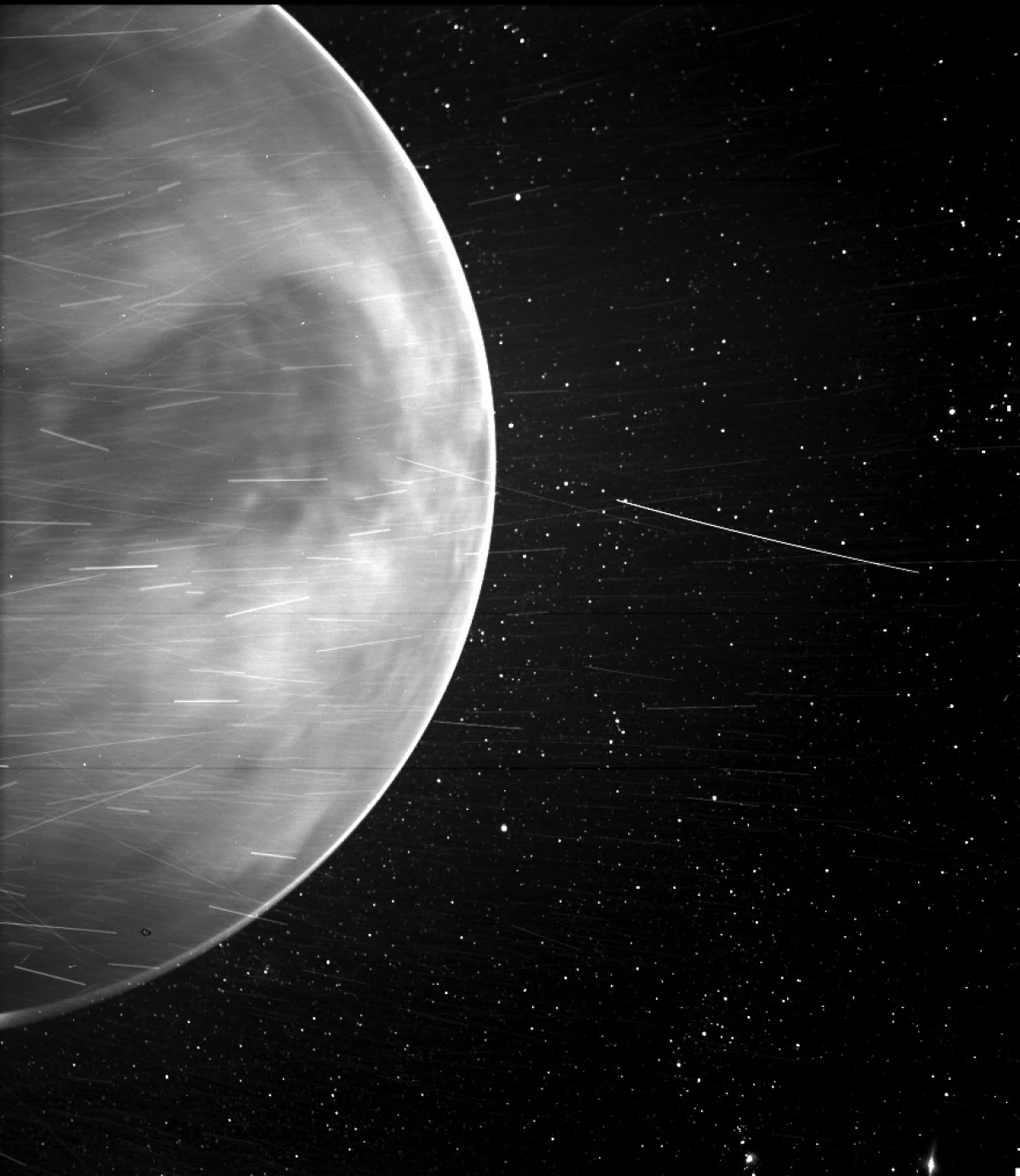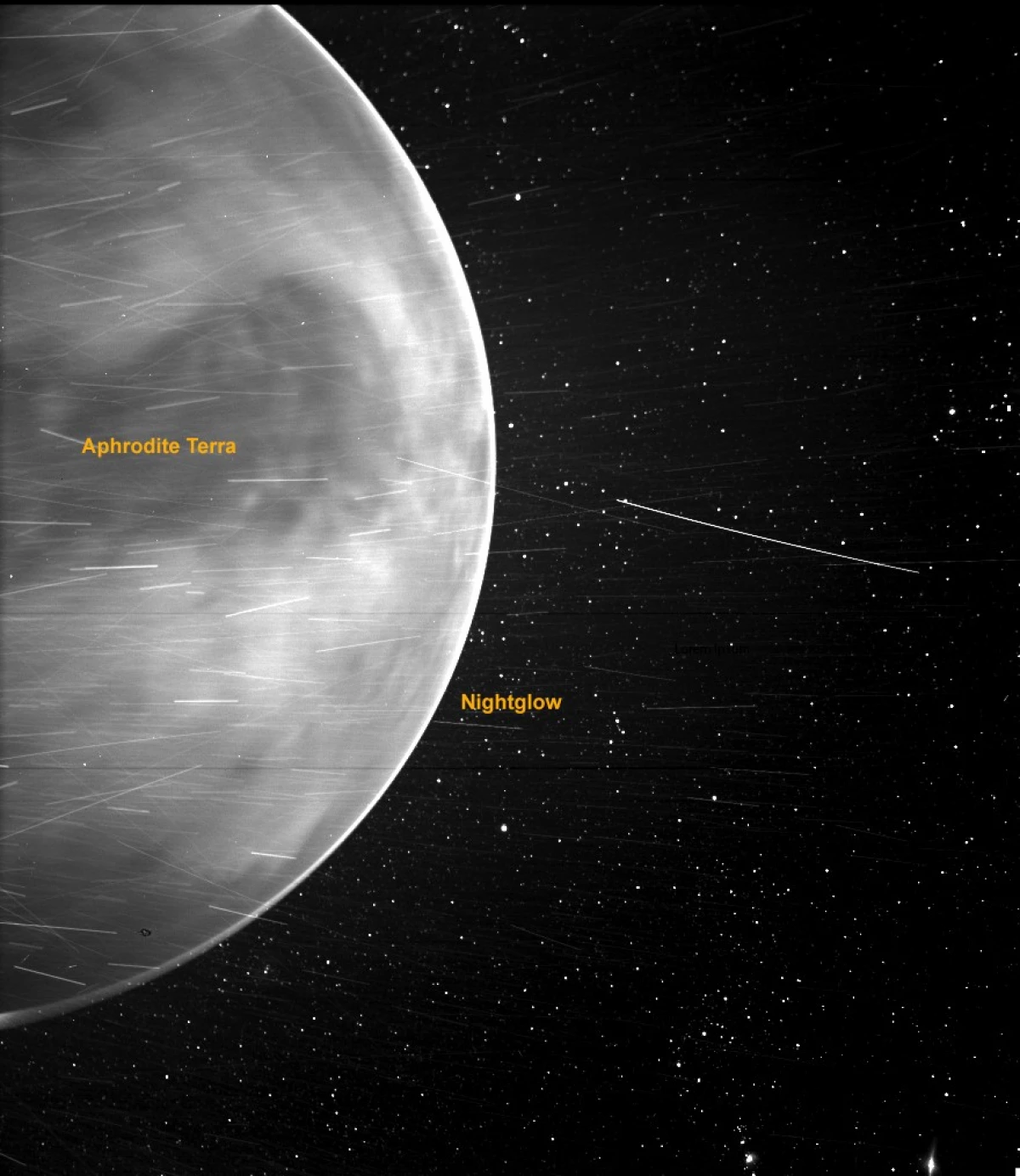
National Aeronautics and Space Research (NASA) has published a new photo from the Parker Solar Probe research apparatus. The probe took a picture even during the third span by Venus in July last year, but scientists received it only recently. This image is curious immediately for several reasons. First, this is a snapshot of the Night side of the Russian Planet. And secondly, they manifested themselves extremely unusual details, which, in fact, should not be there.
The fact is that the tool that captured this image is Wispr, is a pair of telescopes with digital matrices that are sensitive to the visible range of electromagnetic radiation. The main task of the device consists in studying the solar crown and matter energized during the activity of the star. During the spans by Venus, it is used to photograph this planet, that is, the implementation of the minor tasks of the mission. And published the other day, a snapshot presented a real surprise team of Parker Solar Probe operators.
It has two important objects at him. By the very edge of the disk, Venus is visible relatively bright glow. It is assumed that this radiation comes from oxygen atoms entering chemical reactions on the night side of the planet. Free oxygen appears in the Venusian atmosphere at high altitude under the action of solar wind. High-energy particles fall into rare water molecules and split them. By the way, most likely, it is so Venus and lost all its water. A similar mechanism is also fixed on Mars. The second incredible image detail is a dark spot in the center of the visible part of the Venus disk. It suspiciously coincides with the elevation on the surface, which is called the Land of Aphrodites.

So far there is no complete confidence, as you managed to see her through the clouds. Scientists expressed a couple of reasonable assumptions. Most likely, WisPR was sensitive to the near infrared range and sees the land of Aphrodites through the clouds. This area is slightly colder than the rest of the surface, since it is raised over it a few hundred meters (up to three kilometers in some places). Another hypothesis does not contradict the first and rather complements it. Perhaps, there is one of the so-called permeability windows - a small radiation range, in which dense clouds are transparent.
In any case, the snapshot is impressive and despite the seeming simplicity there is a lot of scientific information. Partially clarify his oddities scientists plan when the following images arrive closer to April of this year. Parker Solar Probe made them in mid-February during his fourth span by Venus. But the transfer of large amounts of data from such a remote and fast moving apparatus is not easy task.
By the way, there is another mystery in the image: bright touches from the edge to the edge. It is assumed that these are either traces of high-energy particles, or reflected from the smallest dusting sunlight, or, no matter how scary it sounds, small fragments of anti-empty protection of the probe, knocked out by the most dust. There is no single opinion yet. But quite exactly one thing - a clear black spot at the bottom of the Venus disk is not at all a mysterious object, but the usual artifact on one of the Wispr matrices.
The Parker Solar Probe device was launched on August 12, 2018. On his way, he will have to make seven gravitational maneuvers near Venus, four of which are already behind, and the next will happen in October of this year. The main task of the mission is the study of the external solar crown. Along the way, of course, the probe collects scientific data on the "Russian Planet", the benefit of the tools and opportunities is enough. Interestingly, the device has already set one record for man-made objects - speed relative to the Sun: 246,960 kilometers per hour. And he will have to beat him, and also approach the luminaries on an unprecedented close distance.
Venus is one of the first celestial bodies, after the Moon, to which humanity was trying to send research missions. Most of all in this case succeeded by the Soviet Union, from where the nickname "Russian Planet" took. However, after it was possible to clarify the conditions on the surface, the interest of scientists was somewhat girlfriend - in such an extremal environment, the life could hardly exist. Over the past 30, several apparatuses flew past this planet, and there are only three in orbit: "Magellan" (USA, 1990), Vena Express (ESA, 2006) and long-suffering Akatsuki (Japan , 2015), whose work violated multiple difficulties and technical problems.
Source: Naked Science
